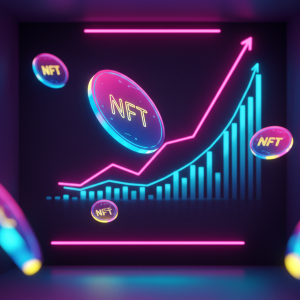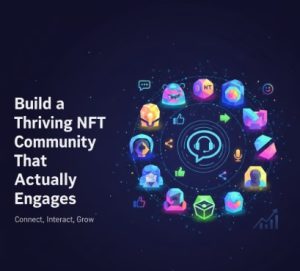Tax Implications for NFT Creators and Collectors

Tax Implications for NFT Creators and Collectors
The explosive growth of the NFT market has created unprecedented opportunities for digital creators and collectors. Yet alongside this expansion comes a complex tax landscape that many participants navigate without adequate preparation. Understanding these tax implications isn’t merely about compliance—it represents a crucial aspect of financial planning that can dramatically impact profitability and sustainability in the NFT ecosystem.
The Creator’s Tax Burden
For digital artists and creators, the transition from traditional sales channels to NFT marketplaces introduces several tax considerations that differ significantly from conventional art sales. Primary sales of NFTs typically generate ordinary income rather than capital gains, subjecting these earnings to higher tax rates than many creators anticipate.
The timing of tax recognition presents another critical consideration. Income recognition generally occurs at the moment of sale regardless of whether creators convert their cryptocurrency proceeds to fiat currency. This distinction creates potential liquidity challenges when tax obligations come due, particularly if cryptocurrency values decline between the sale date and tax payment deadlines.
Marketplace fees, gas costs, and other transaction expenses may offer partial relief through deductions against this income. However, proper documentation remains essential for substantiating these expenses during potential examinations. Smart creators maintain meticulous records of all platform fees, gas costs, and related business expenses to maximize legitimate deductions.
The question of business classification further complicates matters for prolific creators. Those consistently producing and selling NFTs might qualify as self-employed business owners rather than casual sellers, potentially enabling additional deductions while also introducing self-employment tax obligations typically around 15.3% in the United States.
The Collector’s Calculation
For NFT collectors, tax treatment generally follows capital asset principles, with gains or losses recognized upon disposition. The holding period significantly impacts tax rates, with assets held longer than twelve months potentially qualifying for preferential long-term capital gains rates.
The determination of cost basis requires particular attention in the NFT space. Beyond the initial purchase price, collectors should incorporate gas fees, marketplace charges, and other acquisition costs into their basis calculations. These additions can substantially reduce taxable gains upon eventual sales.
Trading activities present especially nuanced scenarios. Unlike traditional art, where like-kind exchanges once provided tax deferral opportunities, cryptocurrency and NFT trades constitute taxable events. Each transaction potentially triggers recognition of gain or loss, creating complex tax tracking requirements for active traders.
For those interested in advanced tax planning strategies surrounding NFT investments, our comprehensive NFT tax planning guide explores legitimate approaches to managing tax exposure while maintaining full compliance.
Cross-Border Complexities
International creators and collectors face additional layers of complexity. Tax treaties, residency rules, and jurisdiction-specific digital asset regulations create a patchwork of requirements that vary dramatically worldwide. Some jurisdictions classify NFTs primarily as intellectual property, while others treat them as investments or collectibles.
While the United States taxes its citizens on worldwide income regardless of residency, other nations apply territorial systems that consider physical location and source of income. This divergence creates both challenges and planning opportunities for globally mobile NFT participants.
Value-added taxes introduce further complications in many jurisdictions, particularly throughout Europe. The determination of whether NFT sales trigger VAT obligations—and who bears responsibility for collection and remittance—remains inconsistently addressed across regulatory regimes.
According to Global Digital Asset Tax Monitor, approximately 73% of NFT participants underestimate their cross-border tax exposure, often discovering compliance gaps only after facing tax authority inquiries.
Marketplace Reporting Evolutions
The regulatory landscape surrounding information reporting continues evolving rapidly. Major NFT marketplaces increasingly implement know-your-customer protocols and enhance their tax reporting capabilities, gradually closing information gaps that previously enabled non-compliance through obscurity.
In the United States, recent infrastructure legislation expanded cryptocurrency reporting requirements that will increasingly impact NFT transactions. These provisions aim to align digital asset reporting with traditional investment channels, potentially increasing visibility into previously undisclosed activities.
Third-party reporting thresholds vary by jurisdiction but typically trigger at lower transaction volumes than many participants realize. This expanding reporting ecosystem means tax authorities increasingly receive information about NFT transactions regardless of whether participants separately disclose their activities.
Estate Planning Considerations
The unique characteristics of blockchain-based assets introduce novel estate planning challenges for substantial NFT collectors. Unlike traditional assets, NFTs stored in self-custody wallets become effectively inaccessible without proper key management and succession planning.
Beyond accessibility concerns, valuation questions complicate estate tax compliance. The volatile and sometimes illiquid nature of NFT markets makes establishing definitive fair market values challenging, particularly for unique pieces without recent comparable sales.
Forward-thinking collectors increasingly implement specific digital asset provisions in their estate planning documents, addressing technical access procedures, valuation methodologies, and disposition instructions. These preparations ensure both technical accessibility and tax compliance following the owner’s death.
Record-Keeping Imperatives
The intersection of blockchain transparency and tax compliance creates a paradoxical situation: while all transactions exist permanently on-chain, organizing this data into coherent tax reporting represents a significant challenge. The pseudonymous nature of blockchain addresses further complicates matching on-chain activity with specific taxpayers.
Comprehensive record-keeping practices should include:
Transaction details beyond what’s visible on-chain, including counterparty information, intended purpose, and business justification for expenses Communication records establishing provenance and authenticity for significant acquisitions Documentation supporting fair market value determinations when using NFTs for non-cash transactions
Numerous specialized software solutions have emerged to address these challenges, automatically aggregating on-chain activity while allowing manual annotation for tax classification. These tools increasingly integrate with tax preparation software, streamlining compliance for those maintaining diligent records.
Loss Limitations and Wash Sale Considerations
For collectors experiencing NFT market downturns, tax-loss harvesting strategies require careful navigation. Current regulatory ambiguity regarding whether NFTs fall within wash sale rule limitations creates both opportunities and risks for collectors seeking to recognize losses while maintaining exposure to specific assets.
Under existing guidance in many jurisdictions, losses from NFT sales remain deductible against capital gains plus limited ordinary income, potentially creating valuable tax offsets during market corrections. However, careful timing and documentation remain essential for supporting these positions.
The collectible classification introduces additional complexities, as certain jurisdictions apply distinct tax treatment to collectibles compared with other capital assets. This classification may subject gains to higher tax rates while limiting loss utilization in some scenarios.
Entity Structuring Options
Sophisticated NFT participants increasingly explore entity-based approaches to managing tax exposure. These structures range from simple sole proprietorships to complex international arrangements, each offering distinct advantages and limitations.
For creators, business entities may provide liability protection while potentially enabling retirement planning options unavailable to individual taxpayers. Corporate structures might allow for income timing flexibility through fiscal year selections and reasonable compensation strategies.
Collectors sometimes utilize specific entity structures for privacy, liability protection, or specialized tax treatments. These approaches require careful balancing of compliance requirements against potential benefits, with costs often making them impractical for smaller collectors.
Charitable Giving Strategies
The appreciation of significant NFT collections has created substantial charitable giving opportunities. Direct donations of appreciated NFTs to qualified charitable organizations may enable donors to claim fair market value deductions while avoiding recognition of built-in gains.
Valuation challenges remain paramount in this context, with substantial donations typically requiring qualified appraisals from professionals familiar with digital asset markets. Documentation standards generally increase with donation value, creating compliance burdens that donors must navigate carefully.
Donor-advised funds and private foundations have begun developing specialized processes for accepting NFT donations, although technical implementation varies widely across organizations. These variations necessitate advance planning and coordination when contemplating substantial charitable transfers.
Preparing for Compliance Evolution
The regulatory framework surrounding NFT taxation continues evolving rapidly as tax authorities develop more nuanced understandings of these assets. This evolution suggests that compliance approaches should incorporate flexibility while adhering to fundamental tax principles.
Conservative reporting positions, thorough documentation, and regular consultation with tax professionals familiar with digital assets represent prudent approaches during this period of regulatory development. These practices help participants navigate current requirements while positioning themselves favorably for future regulatory clarifications.
Conclusion
The tax implications of NFT creation and collection extend far beyond simple income reporting. They encompass complex questions of asset classification, timing, international obligations, and specialized planning opportunities. Navigating this landscape successfully requires both technical understanding of blockchain mechanisms and comprehensive knowledge of applicable tax principles.
As the NFT ecosystem matures, expect increasingly sophisticated compliance expectations from tax authorities worldwide. Those establishing robust record-keeping systems and thoughtful compliance approaches today position themselves advantageously for this evolving regulatory environment, potentially avoiding costly remediation efforts as enforcement activities intensify.
While the decentralized nature of blockchain technology provides certain structural anonymity, the expanding reporting ecosystem and advancing analysis capabilities of tax authorities make long-term non-compliance increasingly risky. Successful participants recognize that sustainable involvement in the NFT space requires addressing these tax implications proactively rather than reactively.








